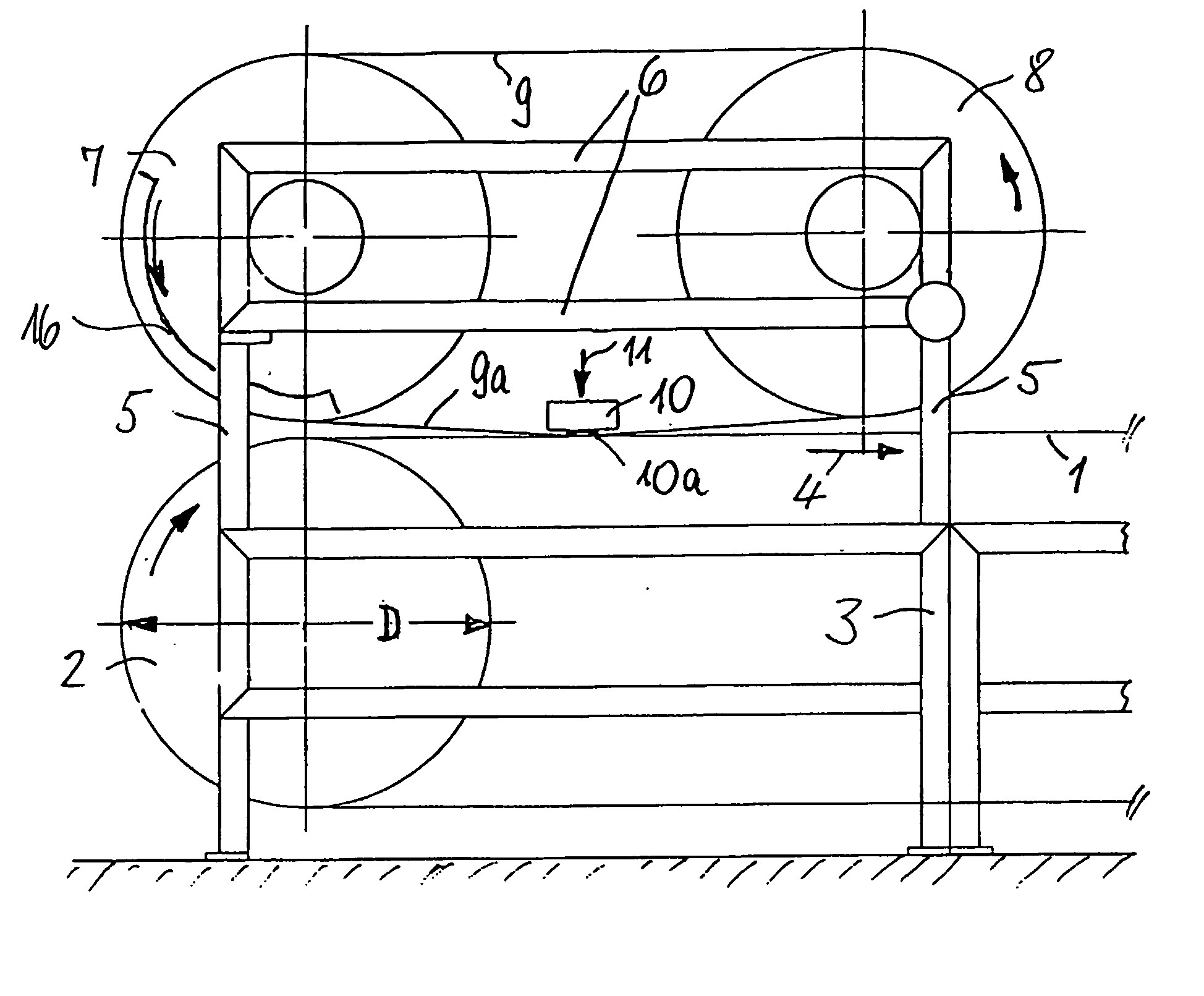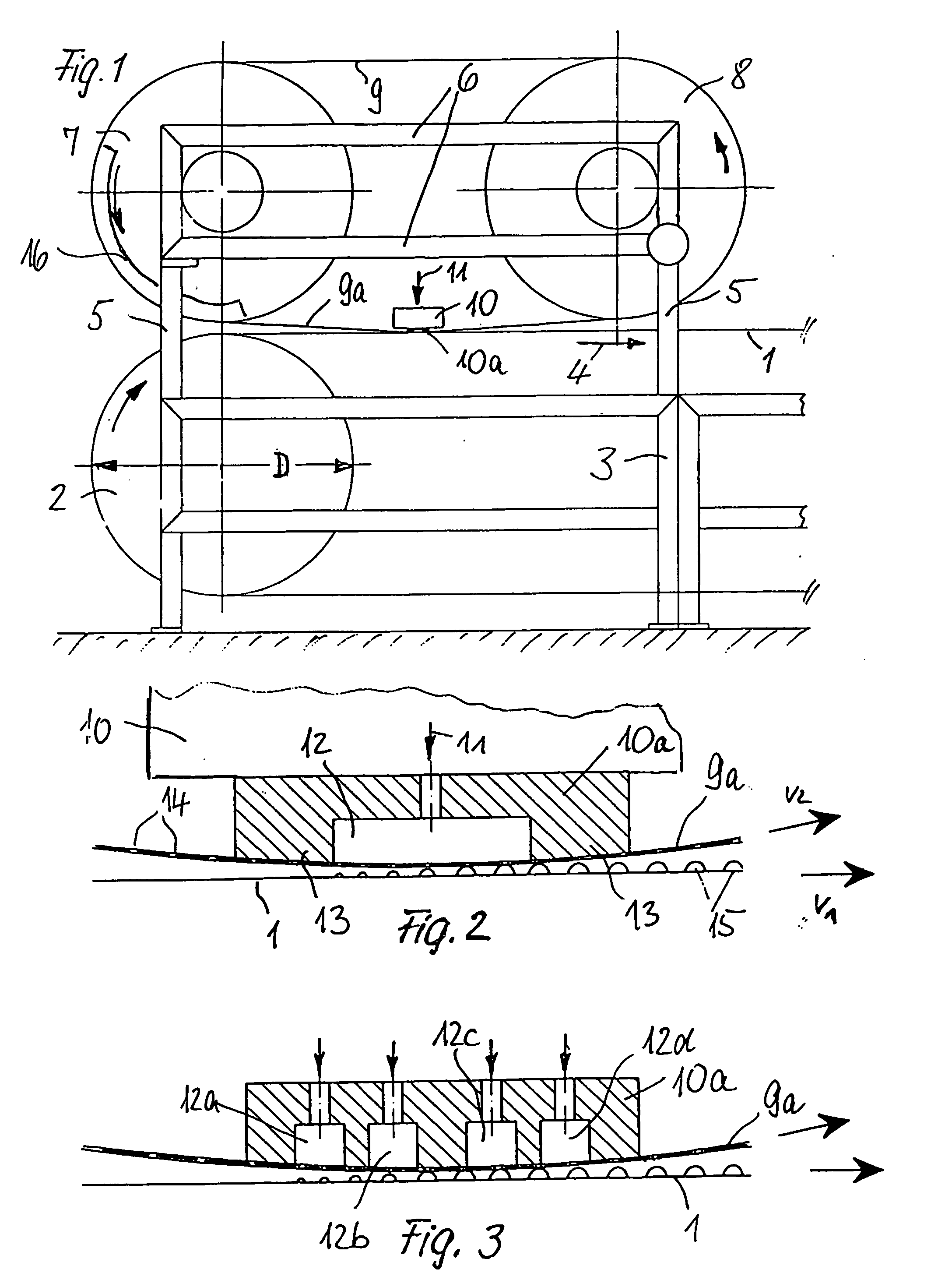Device for producing granules
a technology of granules and granules, which is applied in the direction of granulation on conveyor belts, applications, manufacturing tools, etc., can solve the problems of high belt wear, relatively expensive heating equipment, and high cost of belts of this type in their production, and achieves excellent heating retention capability, simple construction, and resistance to wear.
- Summary
- Abstract
- Description
- Claims
- Application Information
AI Technical Summary
Benefits of technology
Problems solved by technology
Method used
Image
Examples
Embodiment Construction
[0014]FIG. 1 shows that an endless revolving steel transport belt 1, which is designed as a cooling belt in a not further described manner, is held in a machine stand 3 with the aid of two guide rollers, of which only the guide roller 2 is shown. The cooling steel belt revolves in the direction of arrow 4. The depicted guide roller 2 has a diameter D of approximately 1,000 mm.
[0015] Two additional guide rollers 7 and 8 of approximately the same diameter as the one of the guide roller 2 are proposed to be in the machine stand 3, which is provided with a support frame 6 on vertical support pieces 5 extending upwardly. Said guide rollers 7 and 8 serve as guide and drive for an additional endless steel belt 9 that is perforated nearly across its entire width—which is only indicated in FIG. 2 and FIG. 3.
[0016] A lower flight 9a of the perforated steel belt 9 passes by the container 10, which is supplied with a flowable viscous substance in the direction of arrow 11 in a known manner, w...
PUM
| Property | Measurement | Unit |
|---|---|---|
| thickness | aaaaa | aaaaa |
| thickness | aaaaa | aaaaa |
| thickness | aaaaa | aaaaa |
Abstract
Description
Claims
Application Information
 Login to View More
Login to View More - R&D
- Intellectual Property
- Life Sciences
- Materials
- Tech Scout
- Unparalleled Data Quality
- Higher Quality Content
- 60% Fewer Hallucinations
Browse by: Latest US Patents, China's latest patents, Technical Efficacy Thesaurus, Application Domain, Technology Topic, Popular Technical Reports.
© 2025 PatSnap. All rights reserved.Legal|Privacy policy|Modern Slavery Act Transparency Statement|Sitemap|About US| Contact US: help@patsnap.com


